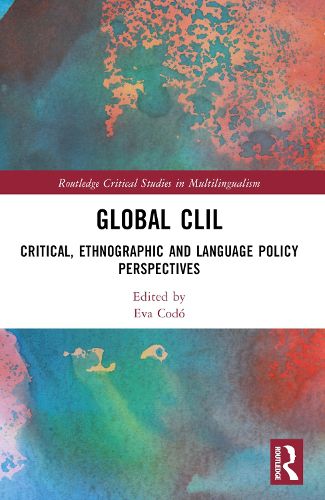Readings Newsletter
Become a Readings Member to make your shopping experience even easier.
Sign in or sign up for free!
You’re not far away from qualifying for FREE standard shipping within Australia
You’ve qualified for FREE standard shipping within Australia
The cart is loading…






This collection turns a critical lens on Content and Language Integrated Learning (CLIL) research, making the case for a sociolinguistic-informed approach towards investigating social inequalities and making visible issues, processes and actors overlooked in CLIL research.
The volume seeks to expand the borders of existing CLIL scholarship through situated ethnographic perspectives, highlighting the value of a critical sociolinguistic perspective in illuminating the relationship between the emergence of CLIL and specific socio-political and economic conditions in contemporary multilingual education. Drawing on examples from Europe, Latin America, Australia and Asia, the book focuses on exploring inequities in CLIL policy and implementation across different institutional contexts and demonstrates the ways in which CLIL extends beyond the classroom as situated in multiple and changing networks of interest, policy and practice.
This book will be of particular interest to students and scholars in sociolinguistics, multilingual education, language policy and planning, and applied linguistics.
$9.00 standard shipping within Australia
FREE standard shipping within Australia for orders over $100.00
Express & International shipping calculated at checkout
This collection turns a critical lens on Content and Language Integrated Learning (CLIL) research, making the case for a sociolinguistic-informed approach towards investigating social inequalities and making visible issues, processes and actors overlooked in CLIL research.
The volume seeks to expand the borders of existing CLIL scholarship through situated ethnographic perspectives, highlighting the value of a critical sociolinguistic perspective in illuminating the relationship between the emergence of CLIL and specific socio-political and economic conditions in contemporary multilingual education. Drawing on examples from Europe, Latin America, Australia and Asia, the book focuses on exploring inequities in CLIL policy and implementation across different institutional contexts and demonstrates the ways in which CLIL extends beyond the classroom as situated in multiple and changing networks of interest, policy and practice.
This book will be of particular interest to students and scholars in sociolinguistics, multilingual education, language policy and planning, and applied linguistics.